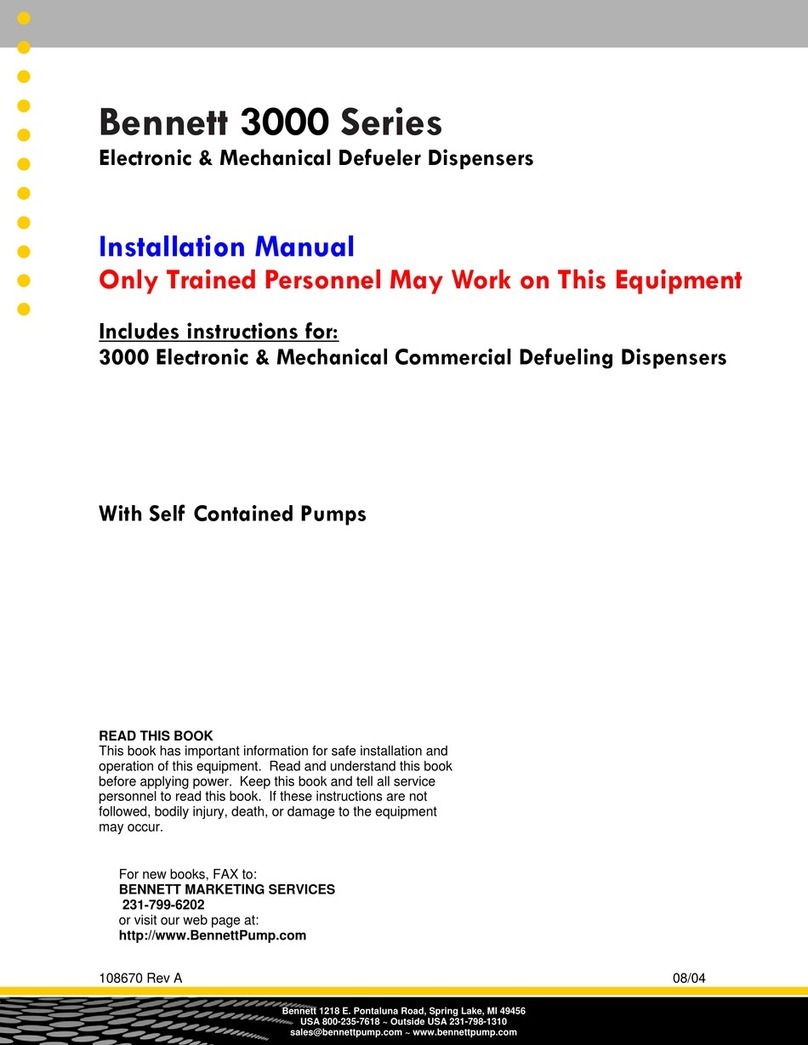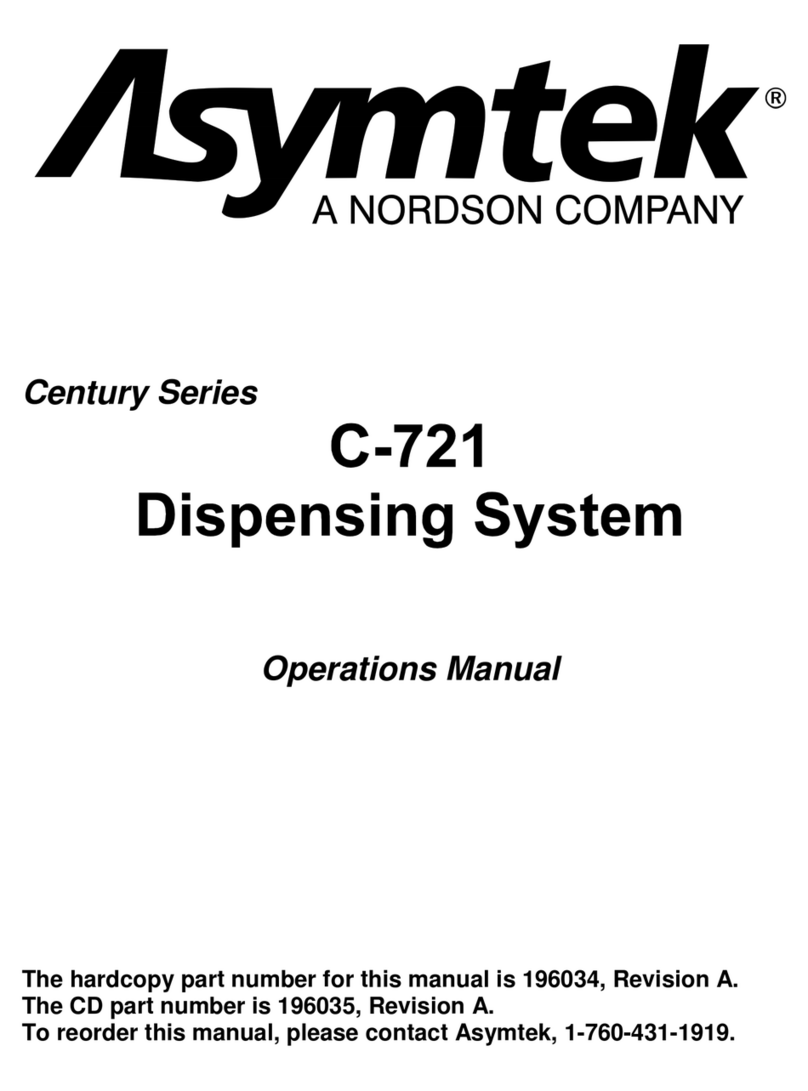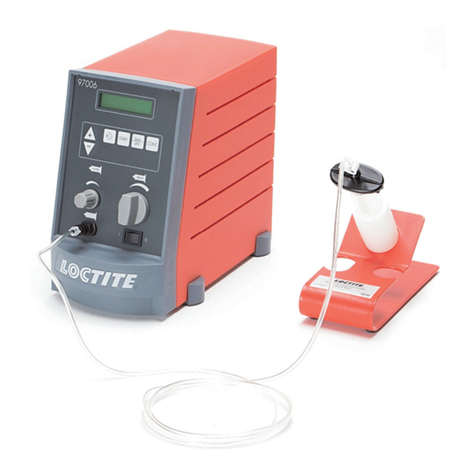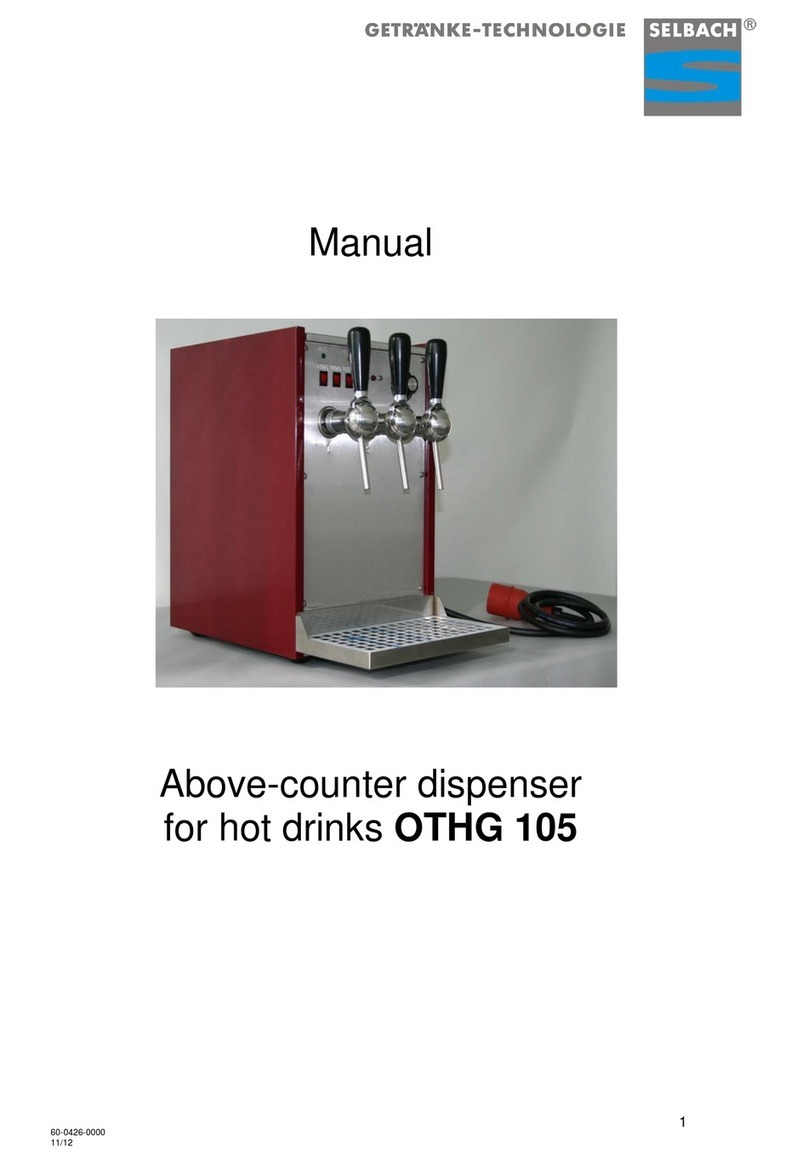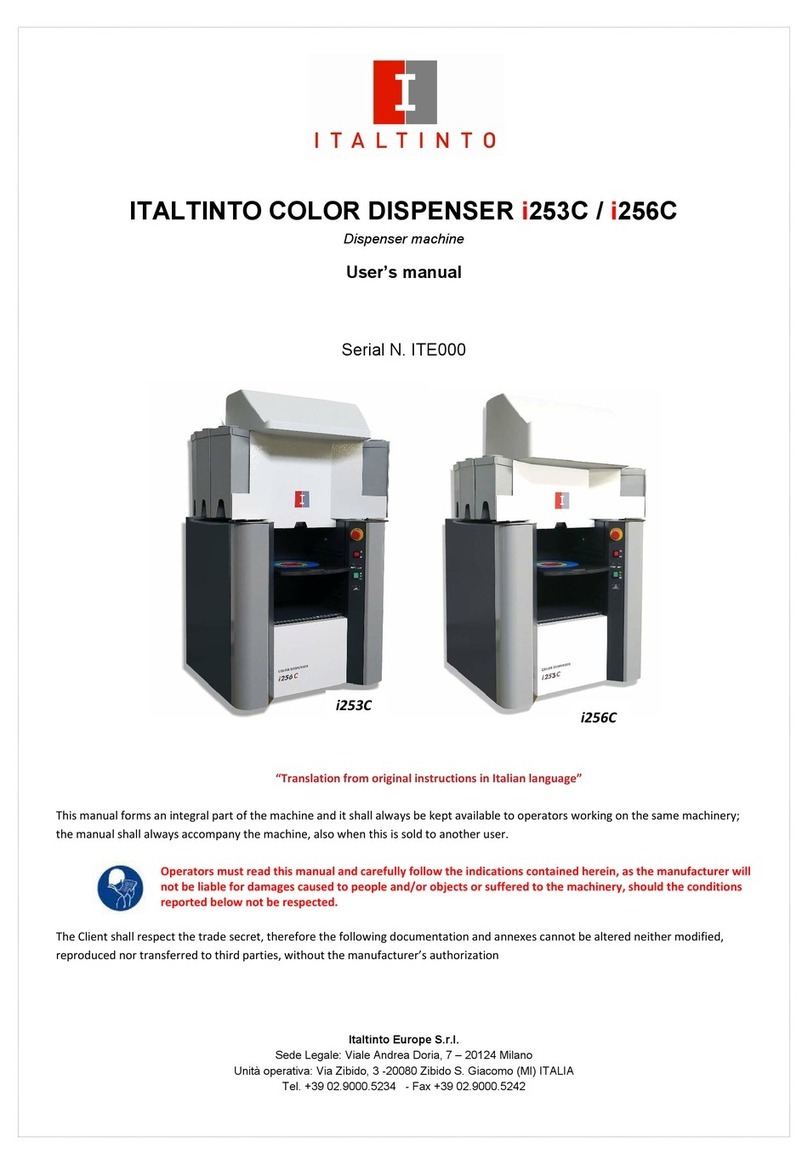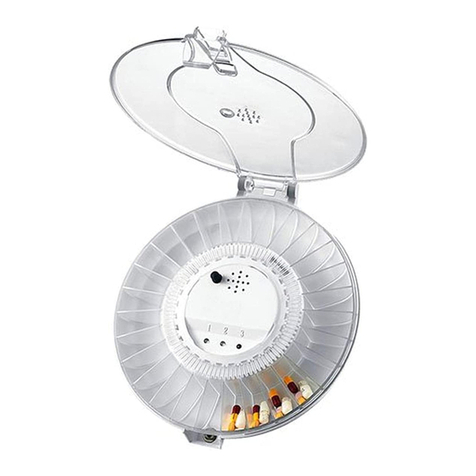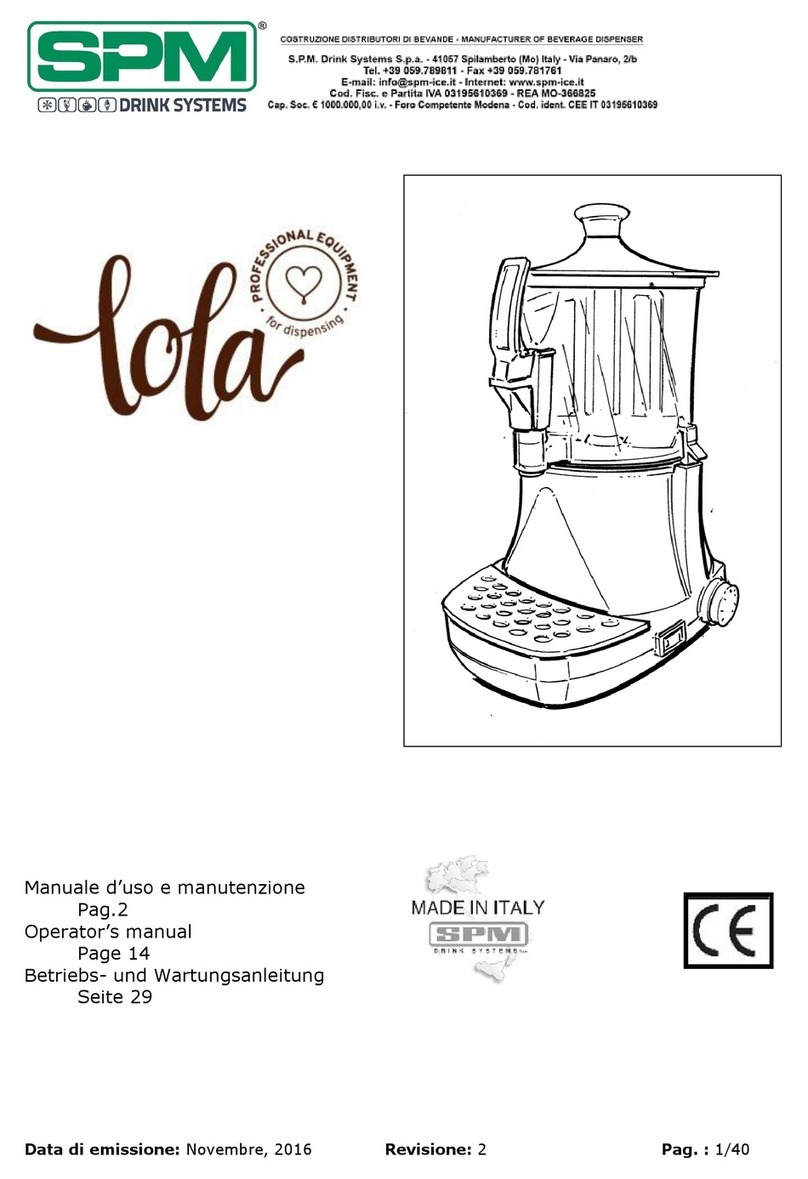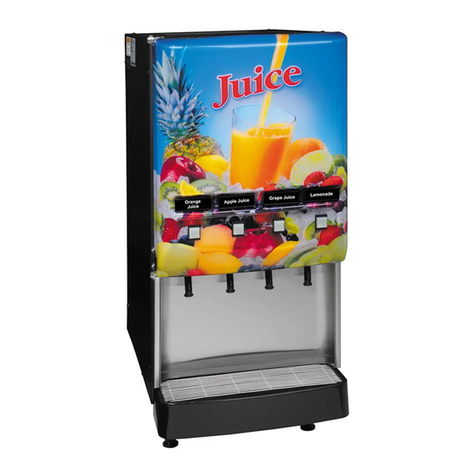Team Medical Brymill CRY-AC-3 User manual

TROUBLESHOOTING GUIDE
ISSUE SOLUTION
If the Cryosurgical Unit
does not spray or sprays
only intermittently.
Spray Tip may be clogged. Remove p. If the Cryosurgical Unit sprays
without a p, clean the opening of the p with a ne needle or bang the p
gently on a table or counter to dislodge any foreign ma er. Then check the
Liquid Nitrogen supply (Dewar) for contaminants that can clog the ps and
unit. To help ensure the Liquid Nitrogen remains free of par late ma er,
such as ice crystals, carbon dioxide slush, lint, etc., the storage Dewar used
should be completely emp d at least 4 mes a year just prior to having it
lled. This is accomplished by vigorously agita ng the residual amount of
Liquid Nitrogen in the Dewar and discarding it in a safe, outdoor area.
If the unit s l has a problem it may have been over lled and there is
insu ient air space inside the bo le to create an adequate build up of
pressure to enable that is required for the Liquid Nitrogen to spray.
Check that the Gasket is in place inside the cover and is not split or missing.
Always ensure you have spare Gaskets available.
Trigger Handle sticks
open.
Valve Stem s cking. Depressurize the unit immediately by unscrewing the
top a quarter to one half turn. Lubricate valve stem as follows:
Wait un the Cryosurgical Unit is warm and dry, the top center valve stem
should be lubricated with a DROP of silicone lubricant or WD-40.
Lub on should be carried out every 3 to 6 months.
CAUTION: If an excessive amount of lubricant is applied the trigger
mechanism could freeze open.
Unit appears to be
“Leaking” or “Hissing”
from the Relief Valve.
During normal op g cond ons, if the Unit is le standing for a period
of me the constant evapo on of the Liquid Nitrogen inside the bo le
will result in the temporary opening of the Relief Value v ng the excess
pressure. This “hissing” is also heard when the Unit is picked up. THIS IS
NOT A PROBLEM. The Relief Valve is just op g as designed.
Unit is frosting over and
excessive hissing from
the Relief Valve.
If the Exterior of Bo is fro g over there will be excessive Relief Valve
vity (hissing). THIS IS A PROBLEM. The vacuum inside the bo le has
deteriorated due to age or the bo le has been damaged.
Replacement of Bo le is necessary. Return the complete Cryosurgical Unit
to an Authorized Brymill Dealer.
Note: If the unit is found to have been misused or abused
(Dropped, dented, cracked etc.) the 3 year warranty will be void.
Trigger does not operate. The posi on of the Trigger should be on the le or right hand side of the
delivery tube and not at the back of the Unit.
If you experience any further problems with your Cryosurgical Unit contact the
company where you purchasedit immediately.

WARRANTY & REPAIRS
All units carry a warranty against manufacturing defects for a period of 3 years from the date of
purchase. If for any reason you require your unit to be serviced or repaired the repair must be
carried out by a Brymill Authorised Repair Center.
To claim warranty the unit must be sent back to where it was originally purchased from.
The warranty does not cover damage as a result of misuse and abuse.
If repairs are performed by any other party the warranty will become invalid. Unauthorized
repairing will also absolve Brymill Cryogenic Systems of any claims for injury caused by an
unauthorized repaired unit.
Warranty on Replacement Flask is 3 months.
NOTES & TIPS
Caution – When handling Liquid Nitrogen ensure you are familiar with the information
contained in the Material Safety Data Sheet for Liquid Nitrogen and that you are wearing the
appropriate recommended Personal Protective Equipment.
The Cryosurgical Unit is easily ed warm or re led cold a er prolonged use.
Liquid Nitrogen may be carefully poured into the Bo le (slowly when warm) or by any standard
LOW pressure withdrawal device from a Liquid Nitrogen storage Dewar.
The volume of Liquid Nitrogen needed for adequate func oning is from 33% to 70% full.
It is recommended that for a 3 - 6 hour dura on of intermi ent use that the Cryosurgical Unit
be 70% ed.
However, the physician will nd that if the unit is ed approximately 40%, it will be lighter in
weight and the Top will remain slightly warmer for further comfort in con nued handling.
Before replacing the top, ensure that the rubber gasket is s ll in place inside the cap. If it is
missing the Cryosurgical Unit may not pressurize correctly and the top may become stuck. In
this event the Cryosurgical Unit must be returned to an Authorized Repair Centre for proper
removal.
Aer lling a warm Cryosurgical Unit, allow 30 to 60 seconds for the ini l boiling of the Liquid
Nitrogen to subside before a emp ng to replace the Top. If a large number of cryosurgery
procedures are scheduled, the reservoir of Liquid Nitrogen may be topped o a er the t
boiling, and the unit has cooled o .
Caution - To re l a Cryosurgical Unit after it has been in use you must ensure that the unit is
depressurized before removing the top. To Depressurize the Cryosurgical Unit, unscrew the
top a quarter to half turn only. The pressurized gas inside will begin to vent from the hole
situated in front of the Valve Body. Once the hissing has stopped the top can be unscrewed
and removed.
Team Medical | www.teammed.com.au | [email protected] | phone 1300 22 44 50
medical
supplies

INSIDE PART IDENTIFICATION
Rubber Gasket
Pickup Tube
Filter
Team Medical | www.teammed.com.au | [email protected] | phone 1300 22 44 50
medical
supplies
Table of contents
Popular Dispenser manuals by other brands

Salter Brecknell
Salter Brecknell APD-100 User instructions

Nordson
Nordson EFD 1500 Series operating guide

Mondial Designs Limited
Mondial Designs Limited BEBEDORO Instruction and Technical Service Manual

Franke
Franke SD3200 installation guide

WEPA
WEPA Satino 331070 Assembly instructions

ColorMatic
ColorMatic VitoMat III user manual

